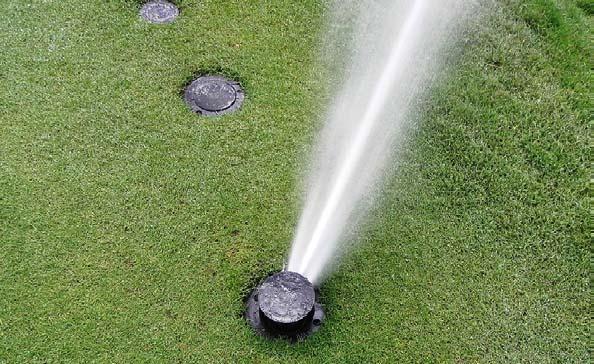Come mid-summer, you don't have to be in California to experience the effects of drought. According to the U.S. Drought Monitor, abnormally dry conditions persist in parts of at least 35 states not named California.
An article in last winter's USGA Green Section Record might be more relevant now than it was when much of the country was blanketed in snow and ice and sub-freezing temperatures.
 In Birmingham, Alabama, about an inch of rain fell in July, which was 4 inches behind the monthly historic average. It was a similar story in the Kansas City area, where monthly rainfall in July was 2.5 inches off the normal range.
In Birmingham, Alabama, about an inch of rain fell in July, which was 4 inches behind the monthly historic average. It was a similar story in the Kansas City area, where monthly rainfall in July was 2.5 inches off the normal range.The article, written by USGA Green Section agronomist Pat O'Brien offers a five-step water-management plan that includes: 1. track usage, 2. agronomic practices, 3. use of wetting agents, 4. use of soil moisture monitoring devices, 5. raising and leveling irrigation heads.
Items 1-4 seem pretty basic, but failure to monitor irrigation heads in the field sometimes can be among the most common causes of irrigation inefficiency.
Writes O'Brien: "When an irrigation head is positioned too low in relation to the playing surface, the trajectory of the water stream is disrupted when it strikes turfgrass immediately adjacent to the head. As the stream of water breaks apart and never realizes its intended path, irrigation coverage is inconsistent, with the turf nearest the sprinkler becoming too wet and the turf farther away becoming too dry.
"Sprinkler heads sink, or may appear to sink, for several reasons, including soil settling after installation or construction, traffic on top of the sprinkler due to mowers and other turf equipment, thatch buildup around the sprinkler, or regular sand topdressing programs raising the surrounding terrain."
O'Brien suggests being aware of heads that might be crooked or tilted or too low in relation to the surrounding area.
Coupled with other basic agronomic practices listed here, regularly monitoring and adjusting irrigation heads can help superintendents manage water more efficiently, especially during hot, dry summer conditions when efficiency is needed most.

